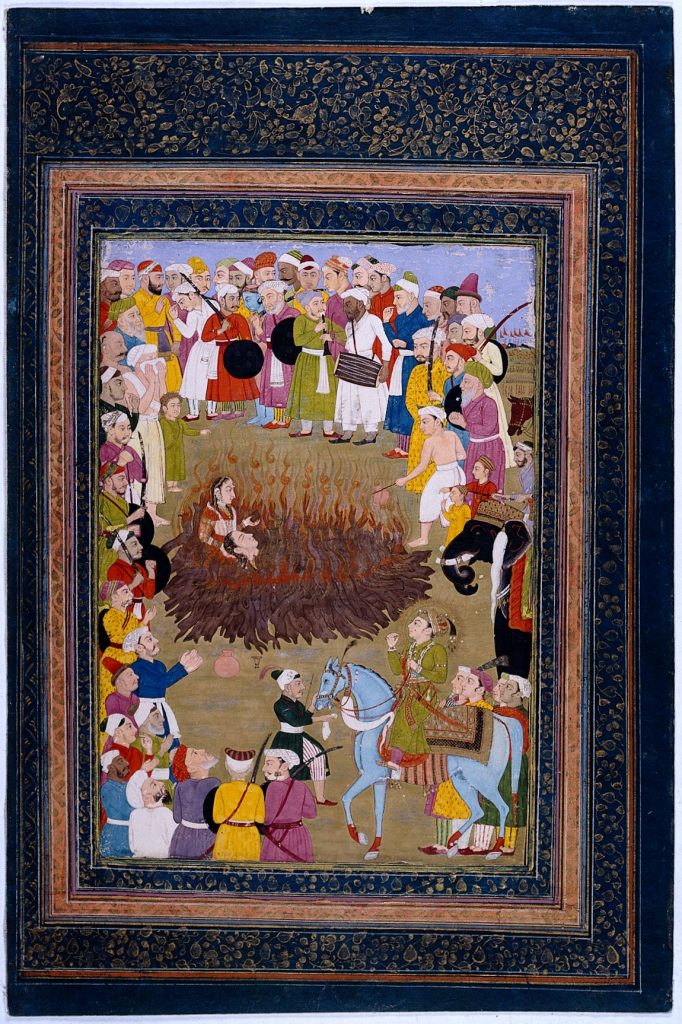
Wikipedia: Sati or suttee is a Hindu practice, now largely historical, in which a widow sacrifices herself by sitting atop her deceased husband’s funeral pyre. Although it is debated whether it received scriptural mention in early Hinduism, it has been linked to related Hindu practices in the regions of India which diminished the rights of women, especially those to the inheritance of property. A cold form of sati, or the neglect and casting out of Hindu widows has been prevalent in India from ancient times. Greek sources from around 300 BCE make isolated mention of sati, but it probably developed into a real fire sacrifice in the medieval era within the northwestern Rajput clans to which it initially remained limited, to become more widespread during the late medieval era.

A painting by Mohammad Rizā showing Hindu princess committing Sati against the wishes but with the reluctant approval of the Emperor Akbar. In the right foreground, attending the Sati on horseback, is the third son of Akbar, Prince Dāniyāl.
Last modified: January 4, 2023


